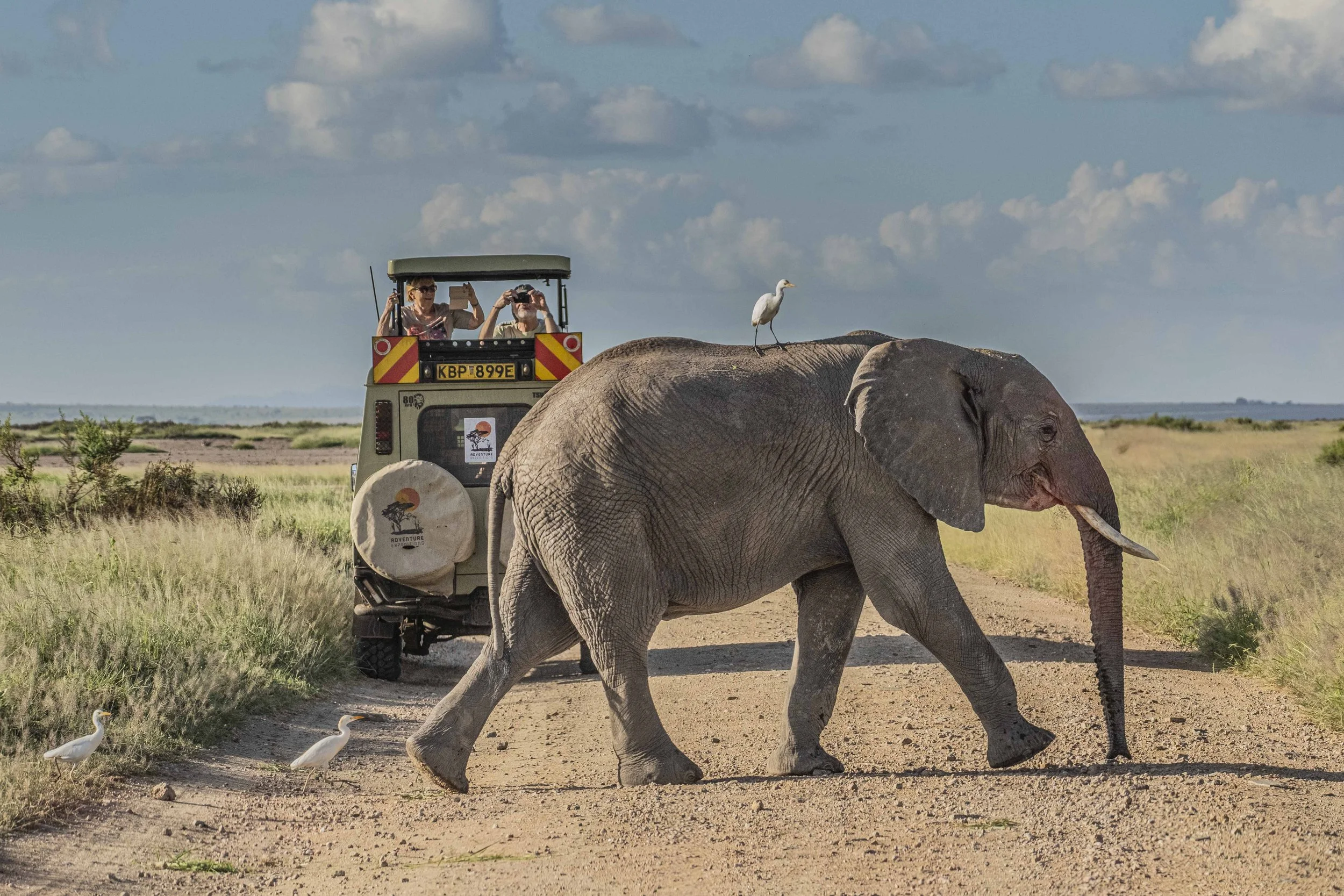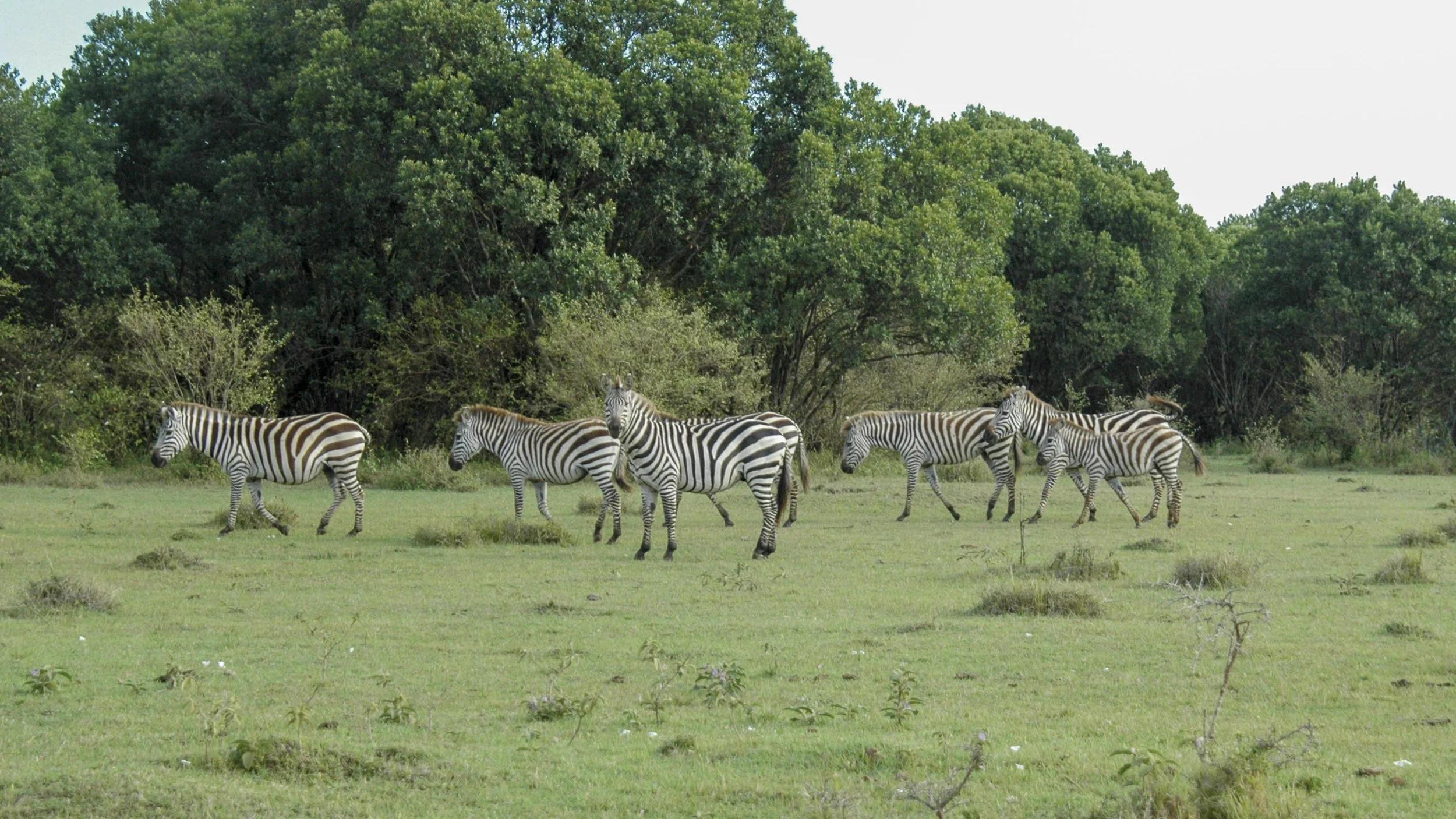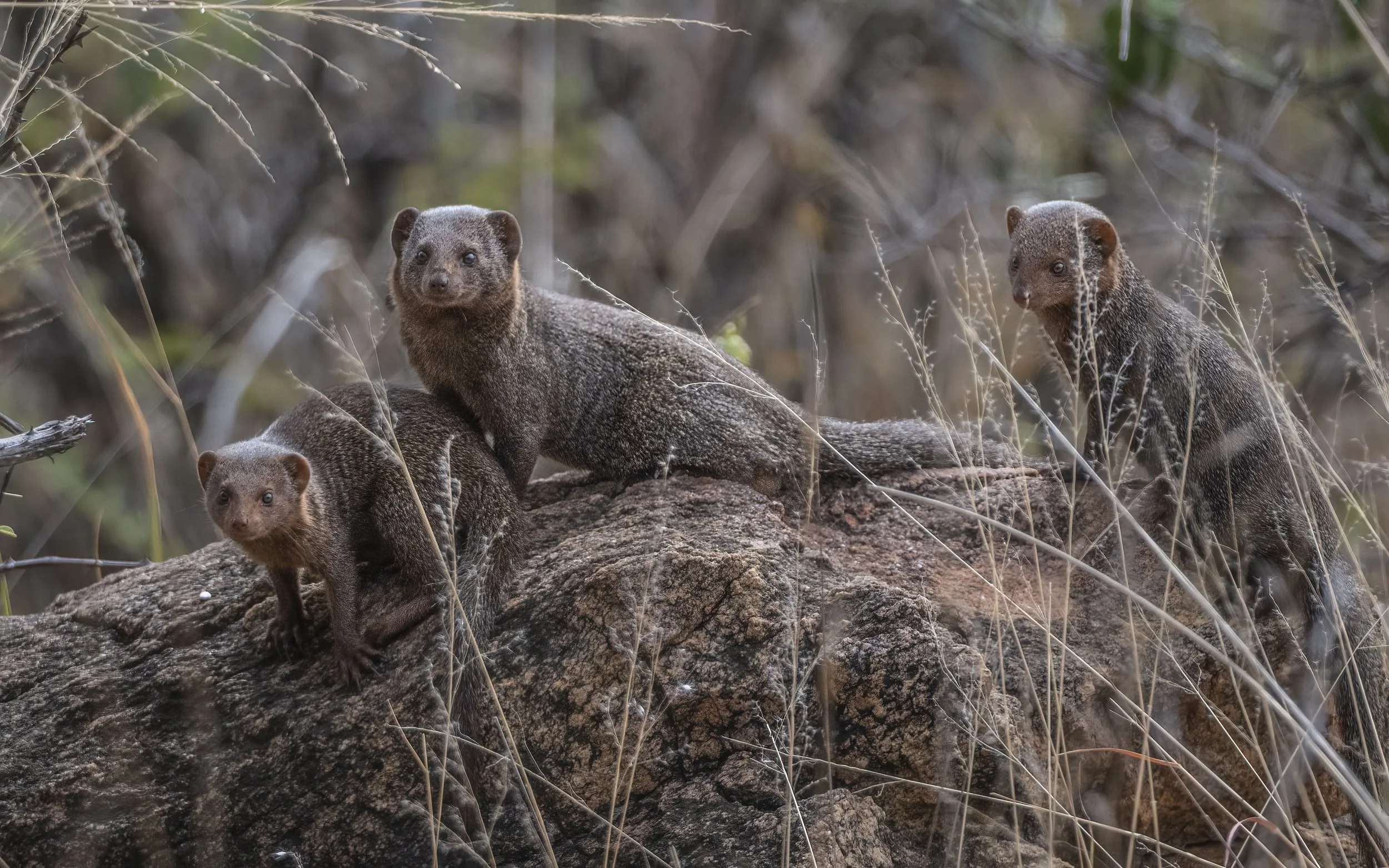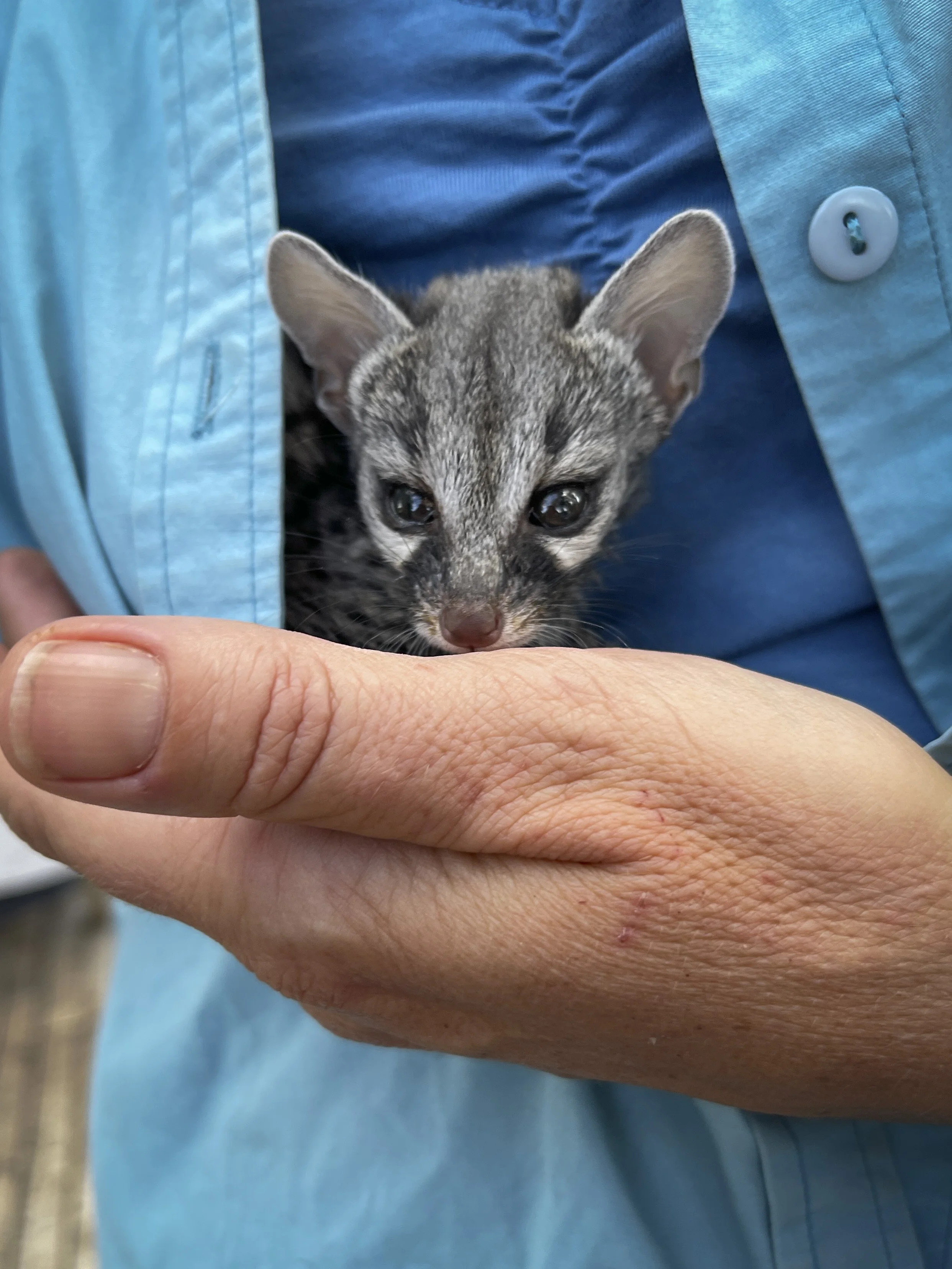Liquid Silver in a Fur Coat
What nature delivers to us is never stale. Because what nature creates has eternity in it. Isaac Bashevis Singer
Baby Genet ©kathykarn
My curiosity piqued as Sophie, the camp owner, approached our table. Her arms were wrapped around her torso, and her shirt seemed to have a life of its own. “Want to meet our latest rescue?” she asked. She cupped her hands, and a tiny striped face followed a by wriggling body slipped out of the folds in her shirt. A baby genet!
Amboseli National Park ©kathykarn
Going on safari conjures up images of encounters with Africa’s iconic large mammals like elephants, giraffes, hippos and lions. I can still recall the thrill of seeing my first African animal in the wild. While on an early morning hike outside our compound, we came across a group of zebras. Zebras! Real live zebras munching nonchalantly like our horses in pastures at home. I was captivated. My inner child felt like she’d stepped through a portal into a Disney documentary. My photos were unremarkable that day (I like to think I’ve come a long way since those early images), but Africa got under my skin and I’ve returned at every opportunity.
Common Zebra, Kenya ©kathykarn
The Big Five never lose their appeal but Africa has many more fascinating animals to learn about. The genet is a good example. Although found across the continent, you might go on dozens of game drives and never meet this small predator that flows like water down trees and through undergrowth under cover of darkness. Genets are omnivores and will eat whatever is most readily available including small animals like rodents, birds, their eggs, frogs, millipedes, centipedes, fruit and more. Like racoons here at home, they are opportunists and are notorious nighttime raiders of camp kitchens if anything is left unprotected.
Photo credit Arnoud Quanjer Africa Geographic
I’d heard our guides say “genet” while driving back to camp at night when two eyes reflected red for a millisecond as a flashlight panned the bush, but I’d never “seen” a genet. Genets belong to the Viverridae family. They are cat like with shorter legs and long banded tails. Their facial features are mongoose-like with big eyes for seeing in the dark. And, unlike mongooses they are secretive, they do not hang out in the day with their buddies willing to pose for a photo shoot.
Curious mongooses ©kathykarn
Sophie told us that she’d found a pair of orphaned genets in camp a few days earlier. One of the babies didn’t survive the night, but this little one was doing well on bottle feeding every three hours. In fact, it thrived under to her care, and I learned as it grew up it even overruled their Jack Russel terrier for prime real estate on the couch! Once full grown and managing on its own, Sophie predicted the genet’s natural tendency to live a solitary life would lure this orphan back to wild. In the meantime, who could resist being up close and personal to this adorable furry bundle of liquid silver?
Genet ©kathykarn
Check out my online store, a percentage of all sales and Substack Subscriptions supports wildlife conservation.






